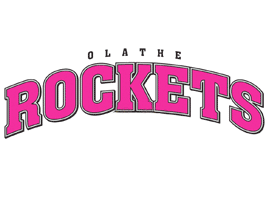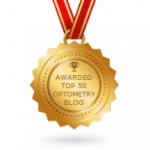Every experience a preschooler has is an opportunity for growth and development. They use their vision to guide other learning experiences. From ages 2 to 5, a child will be fine-tuning the visual abilities gained during infancy and developing new ones.
Stacking building blocks, rolling a ball back and forth, coloring, drawing, cutting, or assembling lock-together toys all help improve important visual skills. Preschoolers depend on their vision to learn tasks that will prepare them for school. They are developing the visually-guided eye-hand-body coordination, fine motor skills and visual perceptual abilities necessary to learn to read and write.
Steps taken at this age to help ensure vision is developing normally can provide a child with a good "head start" for school.
Preschoolers are eager to draw and look at pictures. Also, reading to young children is important to help them develop strong visualization skills as they "picture" the story in their minds.
This is also the time when parents need to be alert for the presence of vision problems like crossed eyes or lazy eye. These conditions often develop at this age. Crossed eyes or strabismus involves one or both eyes turning inward or outward. Amblyopia, commonly known as lazy eye, is a lack of clear vision in one eye, which can't be fully corrected with eyeglasses. Lazy eye often develops as a result of crossed eyes, but may occur without noticeable signs.
In addition, parents should watch their child for indication of any delays in development, which may signal the presence of a vision problem. Difficulty with recognition of colors, shapes, letters and numbers can occur if there is a vision problem.
The preschool years are a time for developing the visual abilities that a child will need in school and throughout his or her life. Steps taken during these years to help ensure vision is developing normally can provide a child with a good "head start" for school.
Signs of Eye and Vision Problems
According to the American Public Health Association, about 10% of preschoolers have eye or vision problems. However, children this age generally will not voice complaints about their eyes.
Parents should watch for signs that may indicate a vision problem, including:
- Sitting close to the TV or holding a book too close
- Squinting
- Tilting their head
- Frequently rubbing their eyes
- Short attention span for the child's age
- Turning of an eye in or out
- Sensitivity to light
- Difficulty with eye-hand-body coordination when playing ball or bike riding
- Avoiding coloring activities, puzzles and other detailed activities
If you notice any of these signs in your preschooler, arrange for a visit to your doctor of optometry.
Understanding the Difference Between a Vision Screening and a Vision Examination
It is important to know that a vision screening by a child's pediatrician or at his or her preschool is not the same as a comprehensive eye and vision examination by an optometrist. Vision screenings are a limited process and can't be used to diagnose an eye or vision problem, but rather may indicate a potential need for further evaluation. They may miss as many as 60% of children with vision problems. Even if a vision screening does not identify a possible vision problem, a child may still have one.
Passing a vision screening can give parents a false sense of security. Many preschool vision screenings only assess one or two areas of vision. They may not evaluate how well the child can focus his or her eyes or how well the eyes work together. Generally color vision, which is important to the use of color coded learning materials, is not tested.
By age 3, your child should have a thorough optometric eye examination to make sure his or her vision is developing properly and there is no evidence of eye disease. If needed, your doctor of optometry can prescribe treatment, including eyeglasses and/or vision therapy, to correct a vision development problem.
With today's diagnostic equipment and tests, a child does not have to know the alphabet or how to read to have his or her eyes examined. Here are several tips to make your child's optometric examination a positive experience:
- Make an appointment early in the day. Allow about one hour.
- Talk about the examination in advance and encourage your child's questions.
- Explain the examination in terms your child can understand, comparing the E chart to a puzzle and the instruments to tiny flashlights and a kaleidoscope.
Unless your doctor of optometry advises otherwise, your child's next eye examination should be at age 5. By comparing test results of the two examinations, your optometrist can tell how well your child's vision is developing for the next major step into the school years.
What Parents Can Do to Help with Preschool Vision Development
There are everyday things that parents can do at home to help their preschooler's vision develop as it should. There are a lot of ways to use playtime activities to help improve different visual skills.
Toys, games and playtime activities help by stimulating the process of vision development. Sometimes, despite all your efforts, your child may still miss a step in vision development. This is why vision examinations at ages 3 and 5 are important to detect and treat these problems before a child begins school.
Here are several things that can be done at home to help your preschooler continue to successfully develop his or her visual skills:
- Practice throwing and catching a ball or bean bag
- Read aloud to your child and let him or her see what is being read
- Provide a chalkboard or finger paints
- Encourage play activities requiring hand-eye coordination such as block building and assembling puzzles
- Play simple memory games
- Provide opportunities to color, cut and paste
- Make time for outdoor play including ball games, bike/tricycle riding, swinging and rolling activities
- Encourage interaction with other children.




